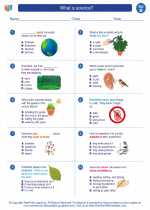Temperature
Temperature is a key environmental factor that can affect living organisms. Different organisms have different temperature tolerances, and extreme temperatures can have a significant impact on ecosystems.
Light
Light is essential for photosynthesis in plants and can also affect the behavior and physiology of animals. The amount and quality of light can vary depending on the location and time of year.
Water
Water is critical for all living organisms. It is necessary for hydration, nutrient transport, and reproduction. The availability of water can vary widely across different ecosystems.
Air
The composition of the air, including the levels of oxygen, carbon dioxide, and pollutants, can have a direct impact on the health and survival of organisms. Air quality is an important environmental factor to consider.
Soil
Soil quality and composition can affect the types of plants that can grow in an area, as well as the availability of nutrients for those plants. Soil erosion and pollution can also have a significant impact on ecosystems.
Other Living Organisms
The presence and abundance of other living organisms, such as predators, prey, competitors, and symbiotic partners, can greatly influence the dynamics of an ecosystem.
[Environmental Factors] Related Worksheets and Study Guides:
.◂Science Worksheets and Study Guides Second Grade. What is science?

 Worksheet/Answer key
Worksheet/Answer key
 Worksheet/Answer key
Worksheet/Answer key
 Worksheet/Answer key
Worksheet/Answer key
 Vocabulary/Answer key
Vocabulary/Answer key
